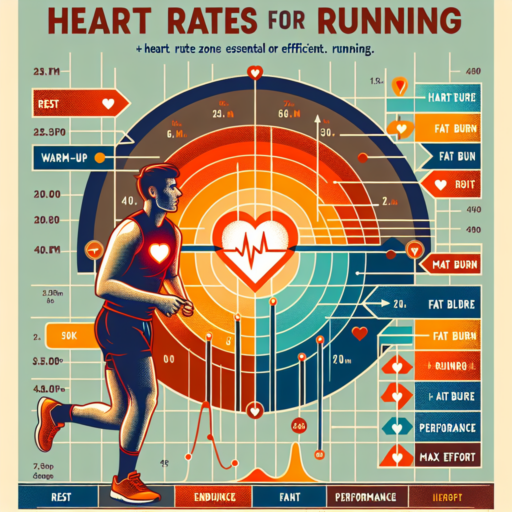No se han encontrado productos.
What is the pacing strategy for a 1 45 half marathon?
The pacing strategy for a 1 hour and 45-minute half marathon requires both planning and discipline to ensure you cross the finish line at your target time. This ambitious goal translates to an average pace of approximately 8 minutes per mile or 5 minutes per kilometer. To achieve this, runners must focus not only on their speed but also on their consistency throughout the race.
One effective method is to divide the race into thirds. In the first third, focus on establishing a comfortable but steady pace that feels slightly easy. This period allows you to warm up without expending too much energy. The middle third is where you should aim to hit your stride, maintaining the goal pace with as much consistency as possible. It’s crucial during this phase to be mindful of your body’s feedback and adjust accordingly, without pushing too hard. The final third is about gradually increasing your effort and, if possible, slightly picking up the pace to finish strong. This approach helps in managing your energy efficiently, preventing burnout before the end of the race.
Integrating interval training and tempo runs into your preparation can significantly enhance your capability to maintain the necessary pace. Interval training helps in building speed, while tempo runs improve endurance, both of which are vital for achieving a 1:45 half marathon. Paying attention to nutrition and hydration in the weeks leading up to the race also plays a crucial role in your overall performance and pacing strategy.
How do you train for a half marathon pace?
Training for a half marathon pace requires a blend of physical preparation, strategic planning, and mental readiness. The key is to build your endurance and speed gradually, ensuring your body adapts to the stress of running long distances at a consistent pace. Start by assessing your current fitness level and setting realistic pace goals based on past running experiences or initial time trials.
One effective approach is to incorporate interval training into your routine. This involves running short distances at a faster pace than your targeted half marathon pace, followed by periods of slower running or walking. Such sessions improve both aerobic and anaerobic capacities, making it easier to maintain your desired pace during the actual race. Aim for one to two interval training sessions per week, depending on your overall training volume and recovery capabilities.
Another crucial component is the long run. Gradually increasing the distance of your longest weekly run helps your body get used to the physical and mental demands of running for extended periods. It’s essential to run these at a slower pace than your goal half marathon pace, focusing on building endurance rather than speed. Every couple of weeks, you might include miles at your goal pace during these long runs to gauge your progress and adjust training as necessary.
How do you predict marathon pace from half?
Predicting your marathon pace from a half-marathon performance can serve as a valuable stepping-stone in your training plan. Understanding the extrapolation of your half-marathon pace to the full marathon distance requires a blend of physiological awareness and strategic planning. This method rests on the principle that your endurance and speed in a half-marathon can, with certain adjustments, translate into an effective marathon strategy.
First, consider the rule of thumb used by many coaches and experienced runners: take your half-marathon time, double it, and then add approximately 10 to 20 minutes. This formula accounts for the physiological shift from utilizing primarily aerobic energy systems in a half-marathon to the increased reliance on anaerobic systems and fat oxidation in the full marathon distance. It assumes, however, that your training volume and intensity supports this level of endurance.
To refine your pace further, analyze your effort level and recovery post half-marathon. Heart rate data during the race can provide insights into your aerobic threshold and help you adjust your marathon pace to fit within your optimal aerobic zone, minimizing the risk of hitting the dreaded «wall.» Additionally, your recovery speed post half-marathon can indicate your body’s ability to endure the extended strain a marathon imposes, allowing for a more customized pace strategy.
How do you pace a 2 30 half marathon?
Aiming for a 2:30 half marathon is a commendable goal that requires careful planning and a strategic pacing strategy. To hit this target time, you must maintain a consistent pace throughout the race, which equates to approximately 11:27 minutes per mile. The key to success is breaking down the race into manageable segments, allowing you to monitor your pace and adjust as necessary without burning out too early.
Firstly, start your race cautiously; it’s easy to get caught up in the excitement and go too fast too soon. Aim for a slightly slower pace in the first 1-2 miles, around 11:30 to 11:45 per mile, before settling into your goal pace. This strategy helps conserve energy and prepares your body for the consistent effort required in later miles. Listen to your body and adjust your pace based on how you feel, keeping in mind that maintaining a steady effort is more beneficial than fluctuating speeds.
Incorporate pace runs into your training to get comfortable with the 11:27 per mile pace. Consistently training at your goal race pace will build both your physical and mental endurance, making the pace feel more natural on race day. Additionally, rehearse your race strategy in these training sessions, such as hydration and energy gels intake, to fine-tune your approach. Remember, the goal is not just to hit your time but to do so in a way that reflects smart racing and pacing strategies.




